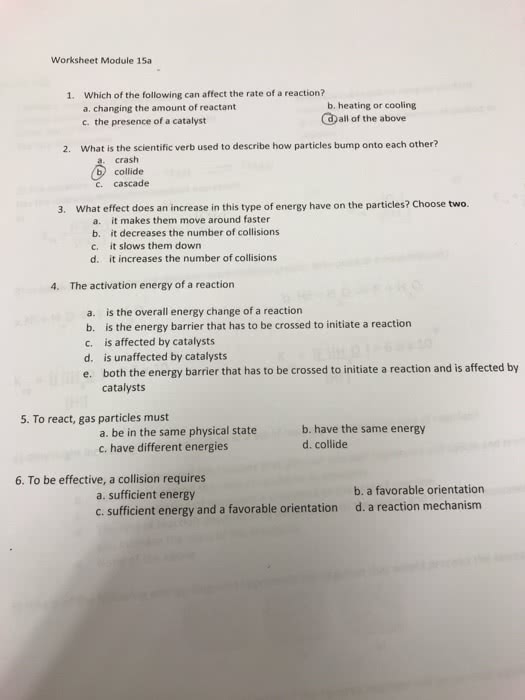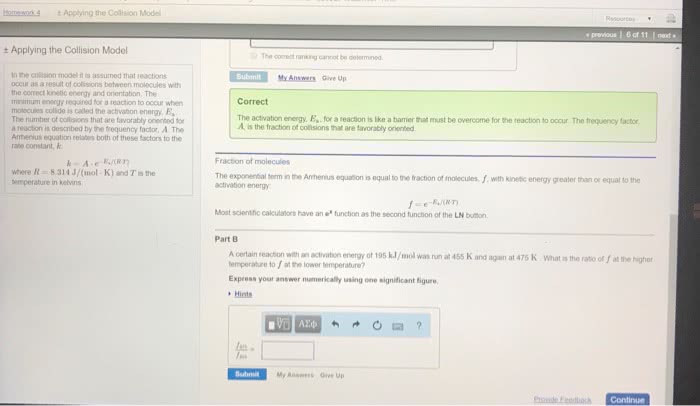CHEM 112 Chapter Notes - Chapter 14: Rate Equation, Reaction Rate Constant, Collision Theory
Document Summary
Chemical reactivity is controlled by both the thermodynamics and kinetics of the reaction. According to collision theory, a reaction occurs only when the reacting species collide, the collision has enough energy to overcome the energy barrier necessary to initiate the reaction, and the reacting species collide with the correct orientation. In a given reaction, not all collisions overcome the activation energy, but the number of effective collisions increases with increasing temperature. Reaction rate is expressed as the change in concentration of a reactant or product over time. The relative rate at which reactants are consumed and products are formed is directly related to the reaction stoichiometry. The rate of a reaction can be expressed as an average rate or an instantaneous rate. A rate law shows the relationship among reaction rate, the rate constant, the concentrations of reacting species, and the reaction order with respect to the reacting species.









